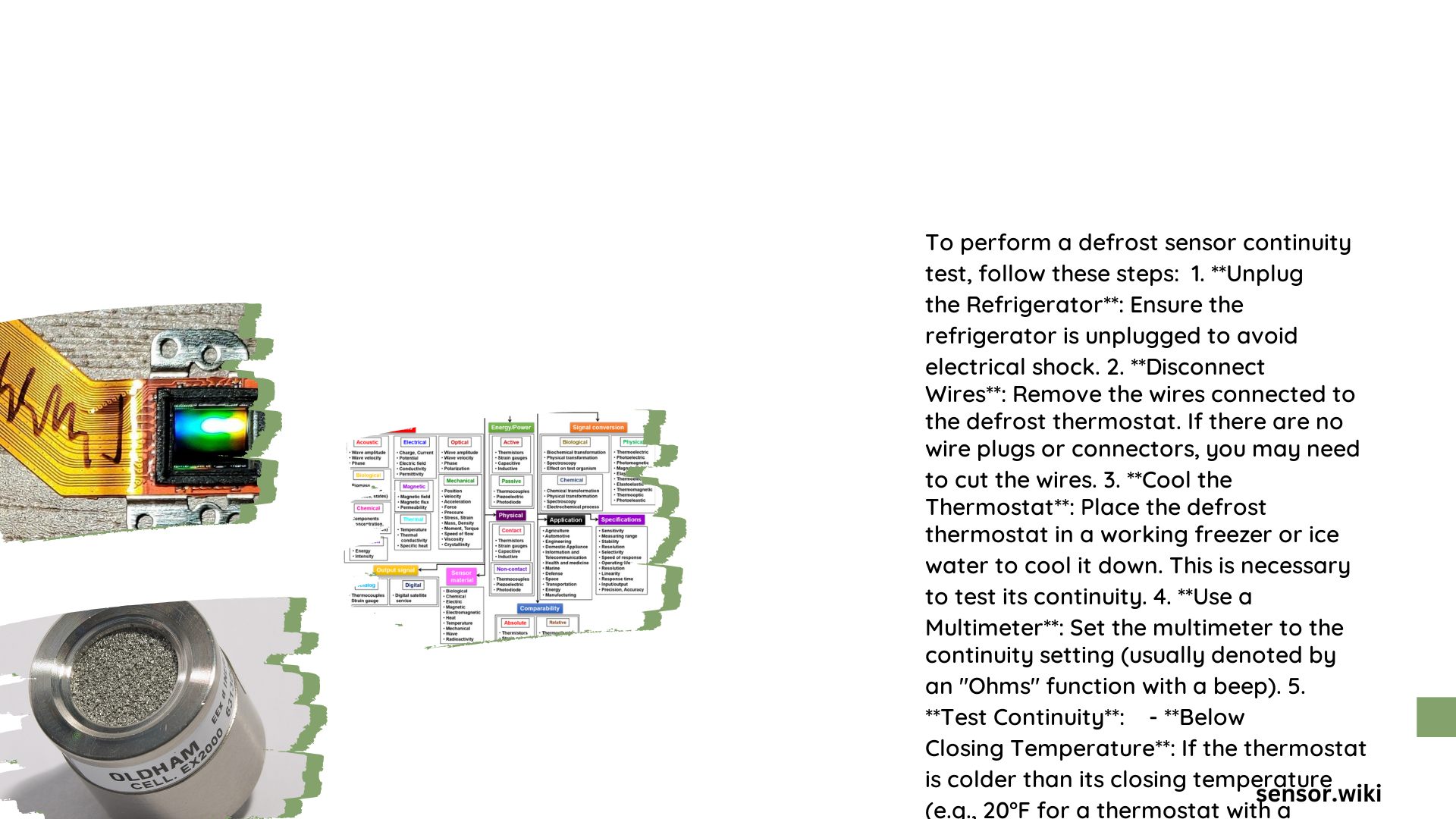A defrost sensor continuity test is a crucial diagnostic procedure for refrigerators and freezers. This test helps identify issues with the defrost thermostat, which controls the defrost cycle. By checking the sensor’s ability to open and close at specific temperatures, technicians can determine if the defrost system is functioning correctly. This guide provides a detailed walkthrough of the testing process, troubleshooting techniques, and essential information for maintaining your appliance’s defrost system.
What is the Purpose of a Defrost Sensor Continuity Test?
The defrost sensor continuity test serves several important purposes:
- Diagnose defrost system issues
- Verify proper thermostat function
- Prevent unnecessary part replacements
- Ensure efficient refrigerator operation
By performing this test, you can identify whether the defrost thermostat is the root cause of cooling problems or excessive frost buildup in your refrigerator.
How to Perform a Defrost Sensor Continuity Test?

Follow these steps to conduct a thorough defrost sensor continuity test:
- Unplug the refrigerator for safety
- Locate and disconnect the defrost thermostat
- Cool the thermostat in a freezer or ice water
- Set up a multimeter for continuity testing
- Connect probes to thermostat terminals
- Observe and interpret the readings
Detailed Test Procedure
- Preparation
- Unplug the refrigerator from the power source
- Identify the defrost thermostat location (usually near the evaporator coils)
-
Disconnect wires from the thermostat (you may need to cut them if there are no connectors)
-
Cooling the Thermostat
- Place the thermostat in a freezer for 1-2 minutes
-
Alternatively, use ice water, but note that it may not be cold enough for some models
-
Multimeter Setup
- Set the multimeter to the lowest ohms or continuity setting
-
Calibrate by touching probes together and adjusting if necessary
-
Testing
- Connect one probe to each terminal of the cooled thermostat
- Check for continuity (zero ohms or beep on digital meters)
- Allow the thermostat to warm up and retest for an open circuit
What Are Common Troubleshooting Techniques for Defrost Sensor Issues?
When dealing with defrost sensor problems, consider these troubleshooting methods:
- Visual Inspection
- Check for a raised top on the thermostat, indicating moisture intrusion
-
Look for signs of damage or corrosion on wiring and connections
-
Symptom Analysis
- Poor cooling in refrigerator section
- Freezer cold but refrigerator warm
-
Excessive frost on evaporator coils
-
Short Circuit Testing
- Isolate the thermostat from the appliance
-
Test continuity at various temperatures
-
Connection Verification
- Ensure all wiring is securely connected
- Check for any signs of wear or damage on connectors
What Tools and Specifications Are Needed for the Test?
To perform a defrost sensor continuity test, you’ll need:
| Tool/Specification | Description |
|---|---|
| Multimeter | Digital or analog, capable of measuring resistance and continuity |
| Freezer or Ice Water | For cooling the thermostat |
| Wire Cutters | May be needed to disconnect thermostat if no plugs are present |
| Replacement Thermostat | Match specifications (e.g., L 55 – 35 F) if replacement is necessary |
A basic digital multimeter suitable for this task typically costs between $20-$30.
How to Diagnose Defrost Termination Sensor Issues?
When diagnosing defrost termination sensor problems, consider the following:
- Voltage Checks
-
While the thermostat itself doesn’t require voltage checks, the defrost heater circuit should show continuity (10-150 ohms) when the thermostat is closed
-
Failure Rates and Replacement Guidelines
- Replace if continuity test fails or visual signs of failure are present
-
Ensure replacement part matches original specifications
-
Part Compatibility
- Check old thermostat specifications (e.g., L 55 – 35 F)
- Use online resources to find compatible parts for your refrigerator model
What Are the Best Practices for Multimeter Checks on Defrost Sensors?
To ensure accurate results when using a multimeter for defrost sensor checks:
- Precise Measurement Techniques
- Use the correct multimeter setting (continuity or resistance)
-
Ensure proper thermostat temperature before testing
-
Calibration Requirements
- Calibrate the multimeter before each use
-
For analog meters, adjust the needle to zero when probes touch
-
Common Pitfalls to Avoid
- Not cooling the thermostat sufficiently
- Failing to calibrate the multimeter
- Misinterpreting readings due to improper temperature
By following these best practices, you can accurately diagnose defrost sensor issues and avoid unnecessary part replacements.
